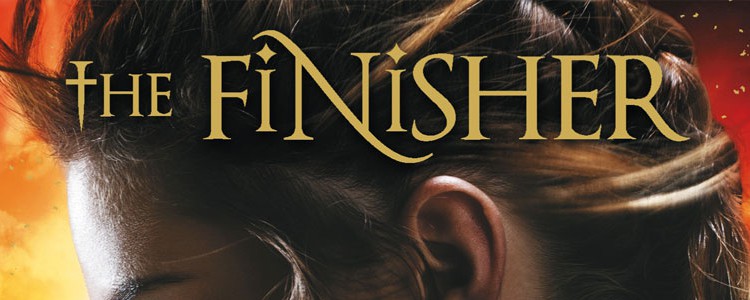July 3, 2006
Jaya Bhattacharji Interview
Leave a comment
Jaya Bhattacharji edits books for Zubaan, an imprint of Kali for Women. Young Zubaan is Zubaan’s children’s/young adult imprint. Jaya is also guest editor, children’s and young adult literature, at The Book Review.
Q: You recently published a fantasy novel aimed at children/young adults. What was the crucial factor in deciding to publish this now? Is there a market for speculative fiction already, or is it a potential market?
A: During the World Book Fair, New Delhi 2006, Young Zubaan released A Shadow in Eternity. It was not a “crucial” decision, but I guess the time was right to publish something like this. By time, I mean that the market was ready to receive a book of this genre.
Pottermania has contributed a great deal to the surge in this form of writing. Given that the Rowling phenomena has been pivotal in encouraging reading, irrespective of the size of the book, I think, a lot of children’s writers, feel that since this is probably the genre that is selling, it is the one to emulate.
There certainly is a market in India for this kind of fiction. I am certainly all for any genre that encourages reading and releasing the imagination. But the Indian market has to evolve its own signature/stamp of fantasy fiction. We cannot rely totally on imitating fiction that is necessarily based on a Western/Christian tradition or of even trying to yoke the two systems together. A lot of the fantasy fiction that comes from the West is in the classic form of Good vs Evil; or in the Romance tradition of being on a Quest; or in search of the Holy Grail, whatever it may be; or reliance on Greek mythology. In India, we have a huge amount of influences to rely upon, which don’t necessarily encompass the idea of a quest or the Holy Grail. Sure, we do have a strong sense of Right and Wrong; Good vs Evil, but it is tempered by the cultural melting pot that we live in, where a lot of traditions are being intermingled. So, if fantasy has to emerge in India, it has to develop its own distinctive identity.
The other kind of fantasy could be good Science Fiction, but I am not sure whether we have a strong tradition in this, except for maybe in Bengali literature.
Q: Do you feel SF/fantasy (speculative fiction) has a future in India? Why, either way?
A: Well, personally speaking, I think speculative/imaginative/slipstream/fantastic/science-fiction or what-you-will-genre has huge potential in India. But, it has to be a story well told and not necessarily a mish mash of all that is to offer. Sure, it can be a genre that transports one into an imaginative world, but it has to be a world that is well created, detailed and to some extent logical. It may not be logic as we know it, but it is perfectly rational in the parallel world that is being created.
Q: Internationally, a lot of speculative fiction aimed at the age group you’re looking at ends up being part of a cross-media franchise – TV, books, merchandise. There’s no history of this in India, but do you think it’s possible eventually, or are the worlds of TV/film and books in India too isolated for this to happen unless something fundamental changes about the markets in question?
A: I don’t think you should consider the marketing blitzkrieg surrounding some of the recent Hollywood blockbusters based upon books/comic characters like Harry Potter, Superman, Spideman, as being a model that needs to be emulated lock, stock and barrel in India. This cross-media franchise is marketing gimmickry and sure, to some extent brings in the money, but except for a few in India, I don’t think most people will be able to afford it even if the youngsters fall for it. There may not be any history of this, but there is only a very thin line between the film and the book world in India. It has seen some cross-pollination, but maybe not in the same way as is evident in the West. (Or in the East? I don’t know!)
Having said this, it maybe possible some way in the near future, but such a huge market control depends upon a great deal of accurate monitoring of IPR, and ensuring that there is no piracy of the products. At the moment, even if it were possible, financially speaking, to hire spin-doctors in India for a film based on a book or a good film rights agent to hawk a good book to a film-maker, it would prove near impossible to stem the leaks in the system. It is a very tough call to monitor cross-media franchise. It requires a lot of efficient and corruption free systems to be installed. Funnily enough, India may not have a history of cross-media franchise, but many of our garment sweatshops/factories in Coimbatore are mass producing “movie” franchise clothes for kids solely for the export market! And these are sold at the exclusive retail stores of movie giants like Disney, Time and Warner. Surprisingly poor imitations of these garments have not necessarily entered the local market in the numbers expected, so may be there is hope for cross-media franchise in the Indian future.
The only fundamental thing that has to change in both the industries, in order for such cross-media franchise to be viable is a close monitoring of the © and stemming the leaks in the piracy market. Also, the Indian market is not one, homogenised market as is noticed in most countries abroad. So, a marketing model that may have been adopted and at least cost applied across the country may not work in India. We are many markets in one, in terms of languages, communities, literature, regional characteristics and tastes. So, in order for cross-media franchise to be successful, it would require huge amounts of direct investment and I don’t think any publisher or film distributor or literary/film agency or even the creator/author would be willing to take such a risk!
Q: Do you get a large number of SF/fantasy submissions, given the overwhelming popularity of crossover/YA speculative fiction abroad?
A: Well strangely enough not too many. But the trickle that we get is talented. Yet, I have my reservations about it. Indian fantasy has to break its shackles from the West and really learn to come into its own, otherwise it is going to just generate a great deal of confusion in the young reader’s mind.
Q: In fiction aimed at adults, SF/fantasy tend to be seen as low-caste, but in the world of children’s publishing, the most popular books in recent times always seem to contain speculative elements. Do you think this is because children are seen to be more accepting of non-identifiably-real-world situations, or because the children’s’ book market is now large enough for it to have its own rules – or is it something different entirely?
A: Speculative fiction is such a convenient and oh, so modern a term for the plain and simple use of imagination in literature for children. The number of categories or kind of titles that this category subsumes is of those books that are very difficult to categorise in any other way. Also, this kind of fiction has existed from whenever literature began to be written down with the young reader in mind. It is not necessarily a recent fashion.
It is not a case of being low-caste, as SF/Fantasy has always had a steady following. It is just that it is now clearly visible as it has been dominating markets recently. Also visibility of this genre has to be linked to the access to information. Today, more and more of the children and young adults have a direct say in their reading tastes and to some extent have the purchasing power as well. So, it is not being mediated by the parent/educationist/teacher. There is direct marketing of books in schools. Spaces have opened for youngsters to hang out, like coffee shops which also have bookstores in them. There is also the Internet where it gives one access to blogs, author websites, online bookstores, reviews, fan fiction sites etc. Children/YA are better informed and to a large extent know what they want.
Children’s publishing has always accommodated a variety of genres, I believe it is the only place where one has the space to experiment and fine tune different genres. So, if you are interested in SF, then you have the freedom to explore the limits of technology, science, etc. Sure, this reader audience is far more discerning than an adult reader, but they can be equally critical and damning.
The book market for children is completely unpredictable, so the current flavour of the decade is fantasy as it has a reading public, hence sales. Given the huge investments required in children’s publishing, most publishers, authors, literary agents will want/ten to be conservative and capitalise on a winning formula rather than take a risk. It is pure economic sense to promote fantasy and hence, its noticeable dominance of the market.
Children and young adults are actually reading a wide-range of stuff. A visit to any local bookshop will confirm that. In fact, as I said earlier, there is a sense of inverted snobbery being noticed in the younger generation today of what and how much they have read. Interestingly enough, it is a greed/thirst for anything that can be read. They will devour anything but very honest in their opinions. Most of the time, it seems that their opinions are not necessarily formed by what is dominating the review pages of newspapers, but their gut feel. Hence, an extremely difficult market to gauge and monitor. It is quite unpredictable.
Q: What sort of children’s fantasy/SF would you like to see coming out of India? And what do you think writers in the genre in this country would do best to avoid?
A: Fantasy for children in India, can be set in any context, time zone etc, but it has to be well written. In the sense, that there should be good, cohesive logic to the universe that is being created. There should be details of the environment and the people and certainly not a cacophony of voices, which really don’t do much for the characters. Each character should have a distinct voice. If different traditions are to be mixed (and frankly, I am all for experimentation in literature), then it has to be done cleverly, treated lightly and presented in an interesting manner. By clever, I mean that the author should not be “showing off” their immense reading and familiarity with these other traditions, but create multi-layers and echoes in the story, that will prompt the young reader to submerge, discover and be totally entranced by the new literary creation. At the end of the day, it has to be a GOOD STORY. Also, a story well told will live for a very long time to come and not necessarily be written and created with “a” single market, fixed in time. In fact, it will then be read for many generations to come.
 “The great thing about hate is that it takes away everything else so that nothing else matters.”
“The great thing about hate is that it takes away everything else so that nothing else matters.” 












